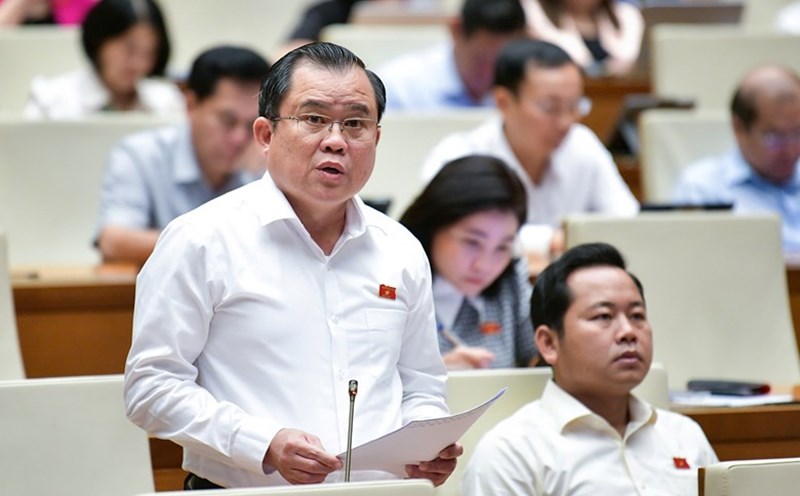Give the right signals to both the electricity producer and the electricity consumer
Vietnam Electricity Group (EVN) has just proposed to the Ministry of Industry and Trade the mechanism and roadmap for applying two-component electricity prices.
Accordingly, the two-component electricity price includes the capacity price and the electricity price, which means the amount to be paid for the registered capacity and the actual electricity consumption, instead of only calculating the actual electricity consumption as at present.
Dr. Nguyen Huy Hoach - Vietnam Energy Council said that applying two-component electricity price will give the right signal to both electricity producers and consumers, to improve economic efficiency from allocation, as well as reasonable use of resources.
With a two-component electricity price, customers will pay separately for each kWh of capacity they register with the supplier every month. When not in use, users still have to pay this cost - instead of the electricity industry bearing and recovering it through price adjustments as it does now.
Therefore, the application of 2-component electricity price only occurs for the group of customers using electricity for production (3-phase electricity), the group of customers using electricity for domestic purposes with output greater than or equal to 2,000 kWh/month. Electricity price will be classified according to 4 voltage levels: Super high voltage, high voltage, medium voltage and low voltage.
"If the single-component electricity price currently applied in our country has the advantage of being simple, but does not accurately reflect the costs consumers cause to the system, then applying additional capacity prices will help encourage customers to use electricity efficiently. Thereby increasing the electricity load factor, saving electricity costs, helping to reduce investment in power sources and expanding the grid," said Mr. Hoach.

In the context of electricity companies applying electronic meters, especially customers using electricity for production and business purposes, implementing electricity prices based on capacity and electricity is necessary to ensure that electricity prices accurately and fully reflect costs. From this perspective, the two-component electricity price mechanism is considered a measure to manage natural load demand.
According to Dr. Nguyen Huy Hoach, implementing electricity prices based on capacity and electricity is necessary to ensure that electricity prices create signals that accurately and fully reflect costs (in terms of capacity) to electricity customers.
Customers with the same monthly electricity usage (in kWh) but a low load factor will pay more than customers with a high load factor.
"Applying electricity prices with two components combined with the current time-of-use electricity price regulations - TOU will contribute to balancing the system's load chart and reducing the need to invest in power sources and grids to meet peak hour electricity usage capacity," said Dr. Nguyen Huy Hoach.
Monthly capacity pricing may be available below actual cost.
For testing, experts from the Vietnam Energy Council suggested that EVN could apply a monthly capacity price lower than the actual cost of investing in providing electricity per kVA (a unit of measurement for apparent capacity) to customers, so that the electricity price does not need to decrease much compared to customers who have not applied the two-component price.
Mr. Nguyen Tien Thoa - Chairman of Vietnam Valuation Association said that many countries in the world have applied 2-component electricity price, mainly for production and business customers; some places apply it for household electricity.
Meanwhile, Vietnam is currently applying a 1-component electricity price list, which means the electricity price is calculated based on electricity capacity. The 2-component electricity price list includes electricity price based on capacity and electricity capacity.
"The difference is that the 1-component electricity price based on electricity mainly covers variable costs of raw materials. The 2-component electricity price also includes fixed costs such as asset depreciation costs, repair costs, salary costs...", Mr. Thoa analyzed.
Mr. Thoa also stated that the two-component electricity price list will fully reflect investment costs and operating costs, on that basis, electricity consumption will be paid to ensure that investment.
Along with that, it has the effect of sending signals so that electricity users know how they use electricity to adjust their electricity usage behavior effectively.










